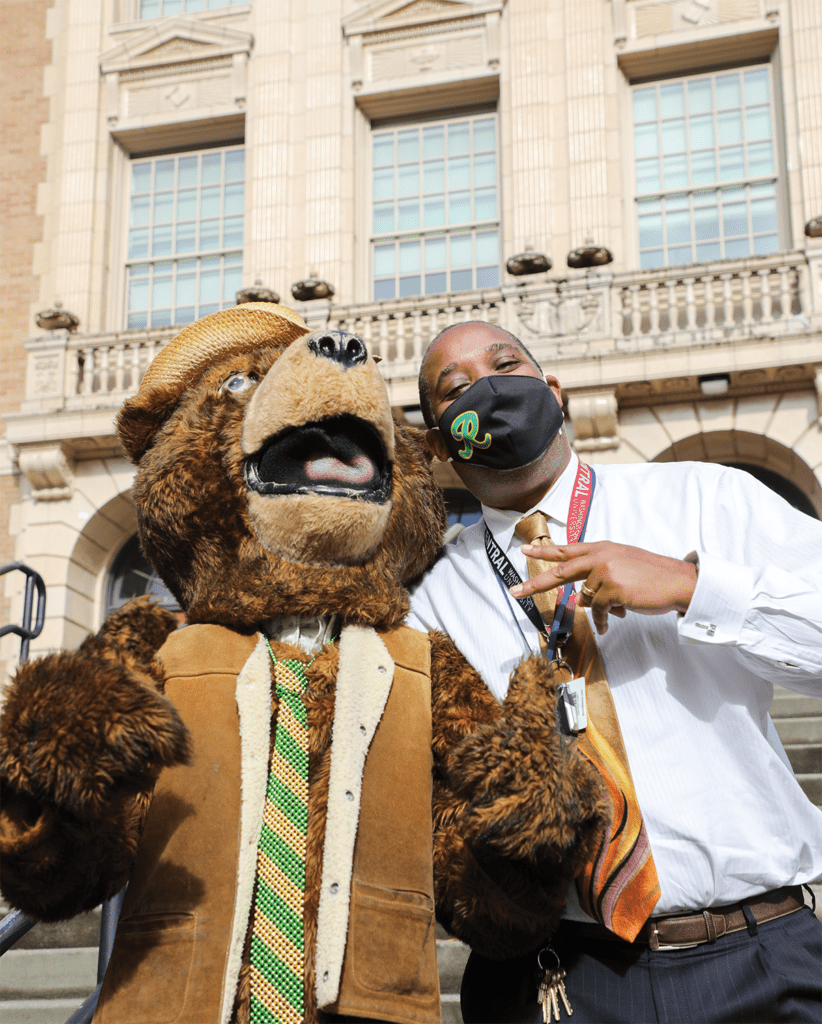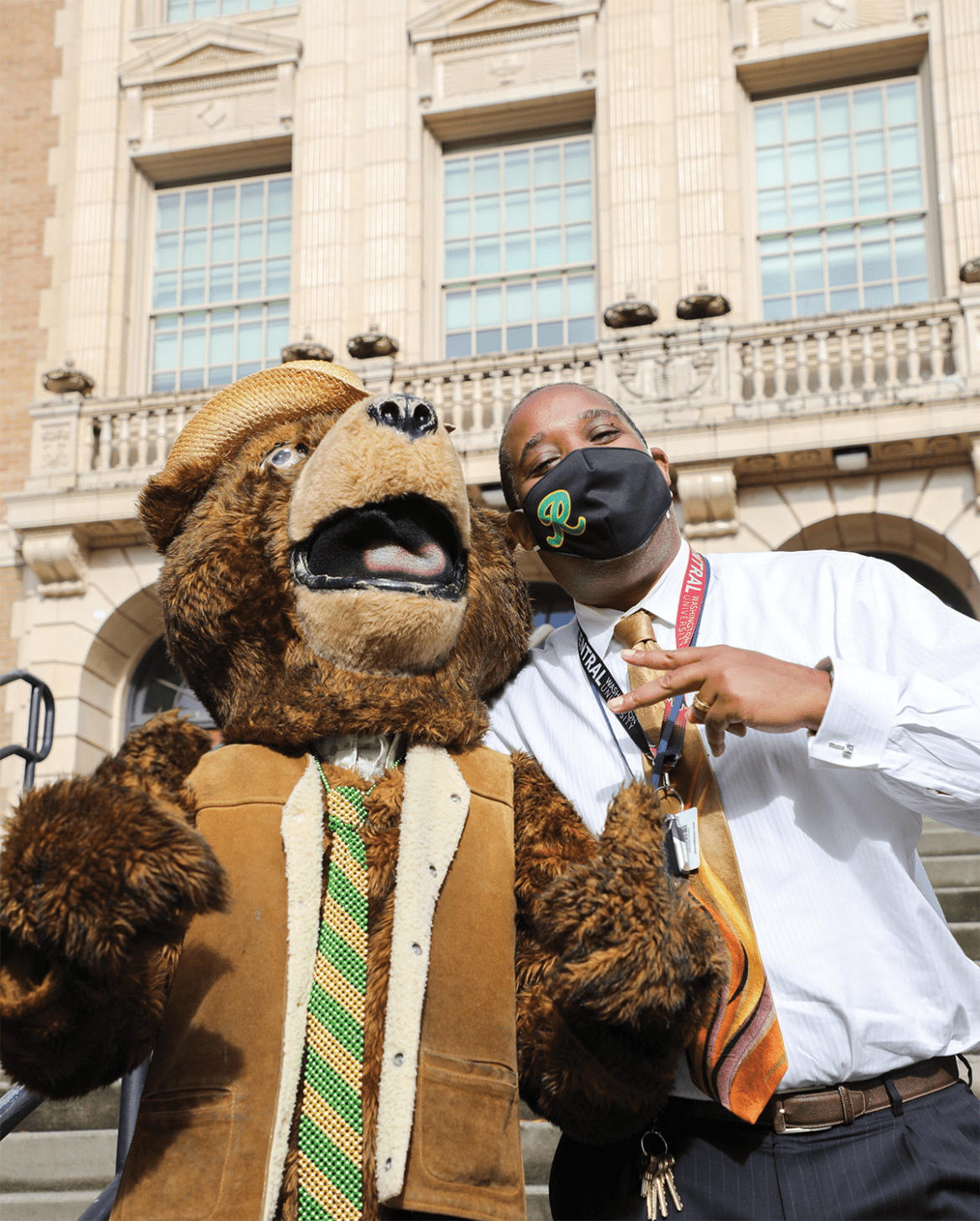
HkwauaQueJol Hollins, pictured above
HkwauaQueJol Hollins, Roosevelt’s new principal, is no stranger to Seattle Public Schools.
Having grown up in the city and attended Roosevelt High School himself as a student, Hollins always had a dream of returning to the community he was raised in. Now, walking through the same school halls years later, he feels a quiet sense of nostalgia.
“I have fond memories of Roosevelt,” Hollins explains. “And honestly, the last time I talked to Ms. Rockerson, who was the principal when I was here, I told her I was going to come back and be principal at this school.”
Yet, Hollins’ journey was not a linear one – in fact, he reveals that he did not grow up wanting to work in education. Instead, after graduating high school Hollins was drawn toward cultural anthropology, fueled by a deep love for stories.
This said, Hollins was extremely conscious of the reality of the field, saying, “cultural anthropologists only get paid about $12,000 a year. It’s hard to live on [that]. So in keeping that theme of stories and reading and learning and understanding different cultures, I got a bachelor’s degree in history.”
From there, his degree led him to venture into the world of teaching. Landing a job as a teaching assistant at a middle school, Hollins was quickly inspired by the students he interacted with on a day-to-day basis; his decision to commit to education was sparked by the drive and innovation he saw in youth.
Hollins was able to point to a particular moment where it all came together for him. “[As] a teacher assistant [I ran] a reading group, and seeing those sixth graders [read] at like a second or third grade to reading at above grade level, was amazing, the process was amazing,” he says. “The click that they had was amazing. Just being able to be part of their learning was amazing. And so that’s what hooked me.”
After this experience, there was no looking back. Hollins got a degree in education, eventually leading him back to Roosevelt.
Coming into a new position, in addition to spearheading the effort to return to the building full time, there was a lot of adjusting involved for the principal. He admits that the transition was challenging, saying “there’s always more things to do than time.”
Beyond obstacles created as a result of the pandemic, Hollins explains that he is also in the process of “learning a different school culture; [that’s] different too.”
Nevertheless, he mentions that “the students have really embraced me.” Smiling, he says, “You don’t know how it feels, to go to a game and all you hear is ‘HOLLINS WHAT’S UP!’ I mean, it’s just an amazing feeling. Or to walk down the hallway. People are just excited…It’s great, just the environment that the students are able to establish.”
Still, Hollins is hoping to start making real changes around Roosevelt. “I feel like I need to do a couple of different things,” he says. “One is, make sure the administration team as well as the school body communicate with each other, the other is making sure students are empowered in many different facets of their own education.”
In the past, Roosevelt has faced challenges regarding its handling of incidents of sexual assault and discrimination, and in order to help address those issues, the administration has worked to put new initiatives in place.
Hollins says, “We’re going to do several different things. One is we ordered six, I believe, anonymous reporting boxes that we’re going to hang around the school. And so that if somebody sees something they can just put a message in the box.”
In addition, he states that “We’re trying to get the school app up and running, where you can record not only what’s happening, but you also send a video and you can also send pictures of something that you might see that’s wrong, that’s happening in or outside the school.” With these policies and others, Hollins is hoping to improve the reporting process and response from Roosevelt’s administration.
Despite these efforts, Hollins acknowledges that students can still struggle to find a place at Roosevelt, saying that he too didn’t fit into the high school experience. “I promptly got kicked out of Roosevelt after, I wanna say I lasted four or five months, maybe,” he states. “With that being said, I have a heart towards students who don’t feel like they fit into the high school life. I don’t think that my high school life challenged me enough. And so, I wasn’t a very good fit, and I can admit that now.”
As a result, Hollins is committed to making sure that everyone who walks through Roosevelt’s doors feels like they are a part of the school community. Though he had a hard time, he says, “That just makes me want to have a very warm and open environment. And so people know that regardless of what you’re getting out of high school, you know that you’re loved.”
Part of creating community is increasing trust between students and staff, which requires Hollins to be present and accessible at school – a commitment he’s taken close to heart.
Hollins has strived to be extremely active in the community during his first weeks at school, attending football games and walking through the halls in the mornings and during lunch. He says that one of his priorities is “Making sure that they know you – so you’re being out, you’re being visible, and you’re being available for them to come and see you and stop by and just have a conversation.”
Hollins has made an impact on students and staff alike. Jessica Proctor, Assistant Principal at Roosevelt, has worked very closely with Hollins in the first months of school. She says, “I think that there’s a different energy within our school community. And so, there’s just a lot more bubbliness and positivity that I’m noticing, for sure.”
Proctor continues by saying, “I think that Mr. Hollins is going to bring about a lot of positive change. I think that he’s got a lot of ideas from having worked in other schools and districts. And so, it’ll bring a lot of fresh perspectives to our school.”
Hollins’ passion for the Roosevelt community is undeniable. “I’m just…deeply honored to be back here, and to be able to lead Roosevelt, in a way that helps not only the students grow but the community grow” he says.
When asked to describe what his main goal is in shaping Roosevelt’s culture, Hollins responds, “Family. Number one, you know family has good times and family has bad times but family sticks together…I try to say that with each message I give out – that I love you, because, you know, we as a society, we as a Roosevelt community, you need to know that the first thing that’s most important is that we love each other. And after that we work everything else out.”
